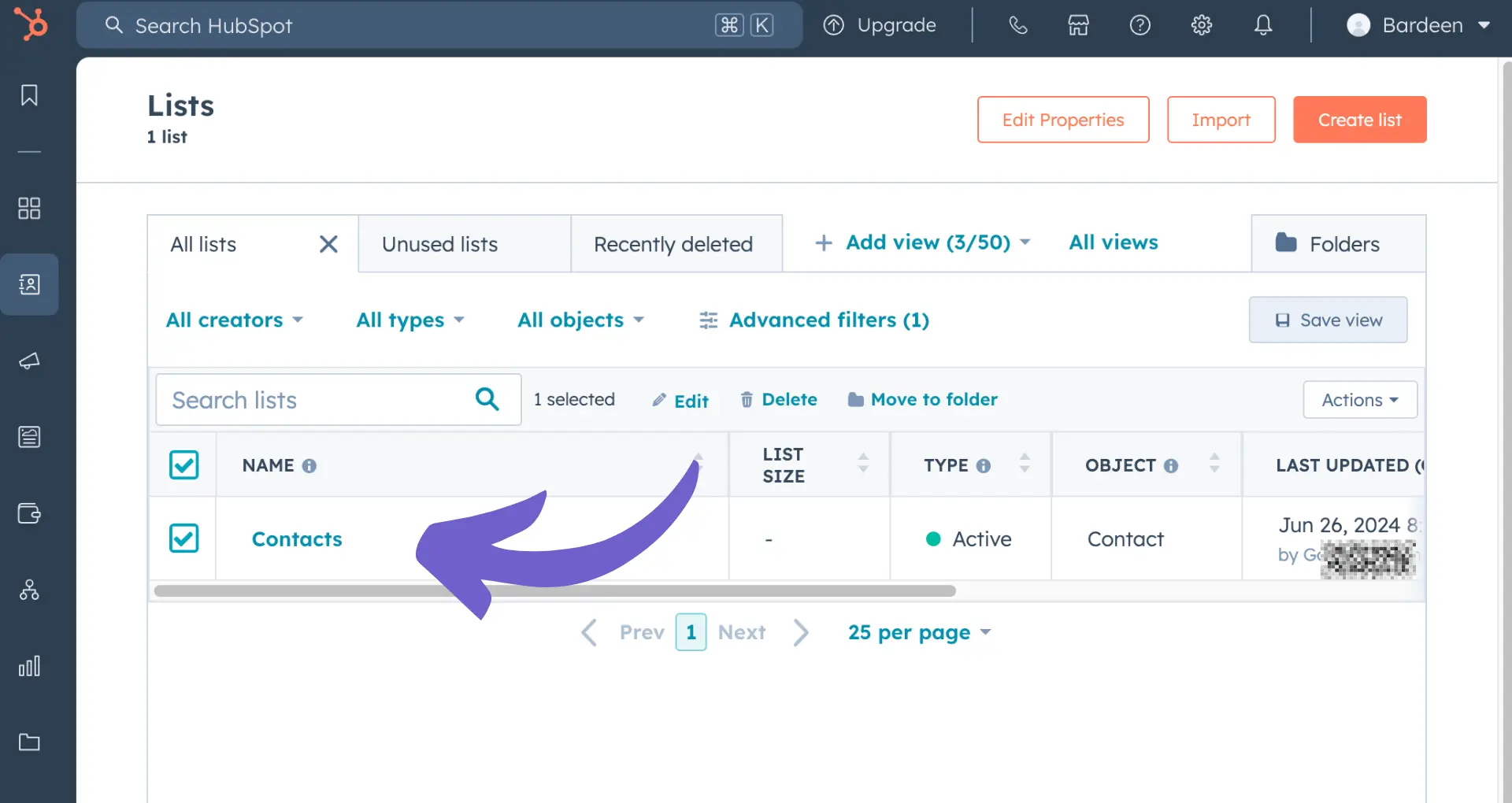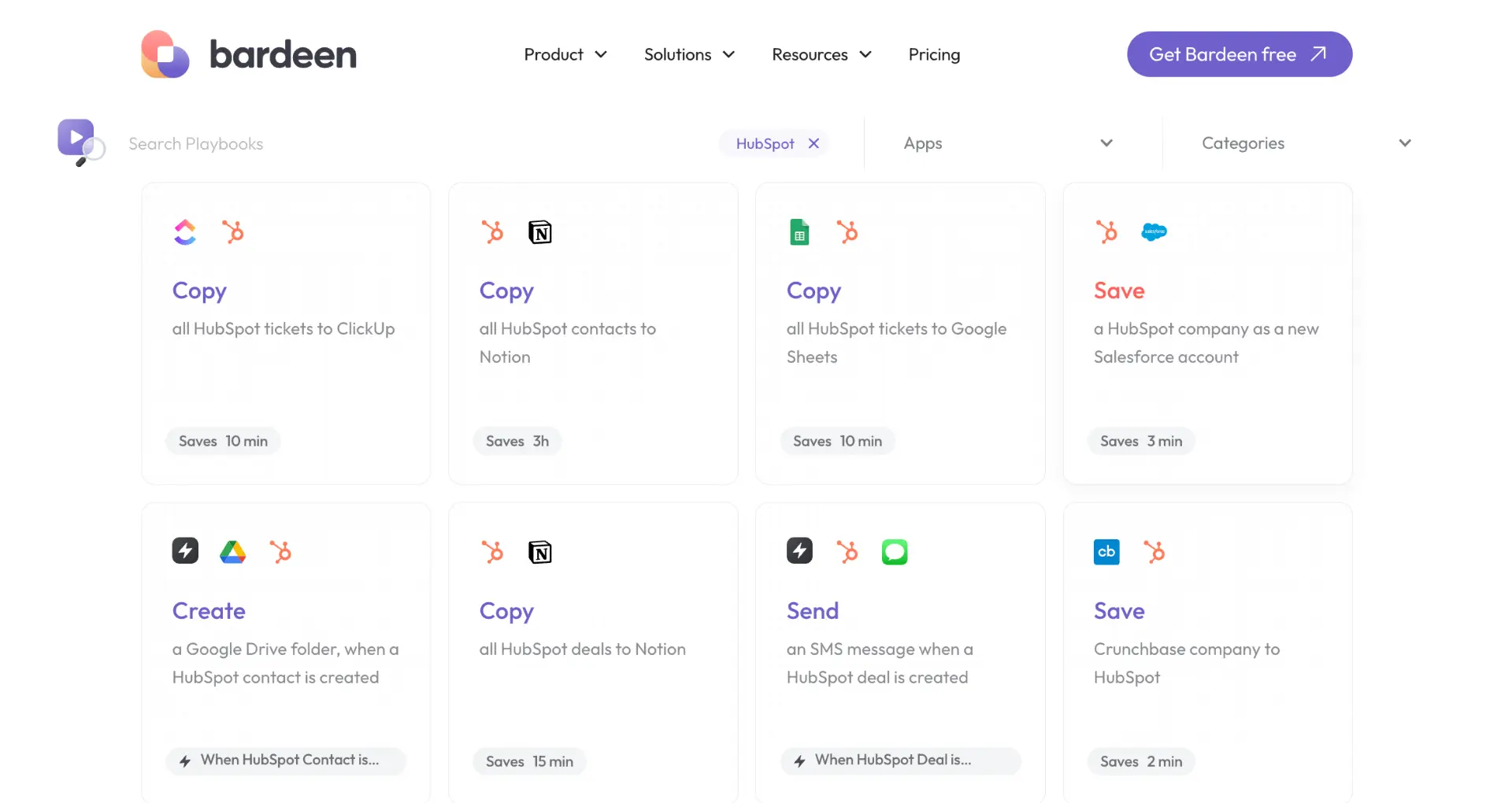





AI cold calling uses AI to improve call volume and lead quality.
By the way, we're Bardeen, we build a free AI Agent for doing repetitive tasks.
If you want to automate your sales process, check out our AI for sales. It helps with prospecting, lead generation, and cold calling. Save time and focus on closing deals.
Cold calling has been a staple in sales for decades, but with the rise of artificial intelligence (AI), the game is changing. Did you know that AI-powered cold calling systems can boost call volume by up to 300%? In this comprehensive guide, we'll explore the world of AI cold calling, diving into its benefits, best practices, and must-have tools. Whether you're a seasoned sales pro or just starting, this article will equip you with the knowledge to take your cold calling to the next level. Get ready to discover how AI is revolutionizing the way we connect with prospects and close deals!
AI cold calling is a game-changer for businesses looking to boost their outreach efficiency and lead generation. By combining traditional cold calling with advanced AI technologies, companies can automate repetitive tasks, prioritize high-quality leads, and personalize their approach for better results. Let's dive into the key components and benefits of AI cold calling.
AI cold calling leverages artificial intelligence to streamline the cold calling process. It involves using smart algorithms to collect customer data, verify users, prioritize leads, and arrange calls. This technology can also engage in initial customer conversations, gathering context and information before transferring the call to a human agent if needed.
AI cold calling systems rely on several essential technologies:
Implementing AI cold calling offers numerous advantages:
A typical AI cold calling process involves the following steps:
By understanding the fundamentals of AI cold calling, businesses can harness this powerful technology to drive better results and stay ahead of the competition.
In the next section, we'll explore best practices for implementing AI cold calling and maximizing its potential for your organization.
Implementing AI cold calling requires careful planning and execution to achieve the best results. By focusing on data quality, crafting compelling scripts, ensuring human oversight, and monitoring performance metrics, businesses can maximize the potential of AI cold calling and drive better outcomes.
The success of AI cold calling heavily relies on the accuracy and relevance of the data fed into the system. To ensure optimal results, businesses must prioritize data quality by:
For example, a software company targeting small businesses should ensure their prospect list includes accurate company sizes, industry verticals, and decision-maker contact information.
AI-generated call scripts can help agents deliver more personalized and effective messages to prospects. When developing these scripts, consider the following:
A financial services firm, for instance, could create AI-generated scripts that address common objections and highlight relevant case studies for each prospect segment.
While AI can automate many aspects of cold calling, human oversight remains crucial for success. Businesses should:
For example, a human agent should step in when an AI cold calling system encounters a complex objection or an unusual prospect request.
To continually improve AI cold calling effectiveness, businesses must track and analyze key performance metrics, such as:
By regularly monitoring these metrics, businesses can identify areas for improvement and optimize their AI cold calling strategies accordingly. For instance, if conversion rates are low for a particular prospect segment, the AI-generated scripts may need to be refined to better address their specific needs and objections.
By implementing these best practices, businesses can unlock the full potential of AI cold calling and drive meaningful results for their sales teams.
Bardeen can help you save time and focus on important tasks. Try our sales prospecting automation tools to enhance your AI cold calling efforts today.
Next up, we'll explore the essential tools you need to build a powerful AI cold calling arsenal that will help you connect with more prospects and close more deals.
AI cold calling tools come in various categories, each designed to streamline different aspects of the sales process. From auto-dialers that save time on manual dialing to conversation intelligence platforms that provide insights into prospect interactions, these tools work together to create a powerful AI-driven cold calling system.
AI cold calling tools fall into several main categories:
By leveraging tools from each category, sales teams can create a comprehensive AI-powered cold calling system that drives results.
When selecting AI cold calling tools, look for features that will have the greatest impact on your sales process, such as:
By prioritizing tools with these key features, you can ensure you're getting the most value from your AI cold calling investment.
Some of the leading AI cold calling tools available today include:
Each of these tools offers unique features and benefits, so it's important to evaluate which ones best fit your team's specific needs and goals.
To maximize the impact of AI cold calling tools, it's crucial to integrate them with your existing sales tech stack. This allows for seamless data flow and workflow automation, enabling your team to work more efficiently and effectively. When evaluating AI cold calling tools, consider how well they integrate with your CRM, sales engagement platform, and other key tools. Look for tools with robust APIs and pre-built integrations to ensure a smooth implementation process. By creating a cohesive, AI-powered sales tech stack, you can unlock the full potential of these cutting-edge tools and take your cold calling to the next level.
AI cold calling tools offer a wealth of features and benefits that can transform your sales process. By understanding the different categories, key features, and top options available, you can make an informed decision and select the tools that will drive the best results for your team.
Now that you're armed with knowledge about the essential AI cold calling tools, let's dive into the crucial topic of measuring the success of your AI-powered cold calling efforts. After all, what gets measured gets improved!
Measuring the success of AI cold calling is crucial for optimizing your sales process and driving better results. By tracking key performance indicators (KPIs) such as conversion rates, call duration, and prospect engagement, you can gain valuable insights into the effectiveness of your AI-powered cold calling efforts.
To measure the impact of AI cold calling, it's essential to define the right KPIs. Some critical metrics to track include:
By monitoring these KPIs, you can assess the effectiveness of your AI cold calling system and identify areas for improvement.
Automate cold outreach and save time with AI tools like Bardeen.
To effectively measure the success of your AI cold calling campaigns, it's crucial to set realistic goals and benchmarks. Consider factors such as your industry, target audience, and historical performance when establishing these targets. For example, if your previous cold calling efforts had a 5% conversion rate, setting a goal of 7-8% for your AI-powered campaign would be a reasonable target. Regularly review your progress against these benchmarks to ensure you're on track and make data-driven adjustments as needed.
Consistently monitoring and analyzing your AI cold calling metrics is essential for long-term success. By regularly reviewing your KPIs, you can quickly identify trends, spot areas for improvement, and make timely adjustments to your strategy. For instance, if you notice that your conversion rates are lower than expected, you might need to prepare for a sales call better or target audience. Regularly monitoring your metrics allows you to stay agile and adapt to changing circumstances, ensuring that your AI cold calling efforts remain effective over time.
One of the most significant advantages of AI cold calling is the wealth of data and insights it provides. By leveraging these AI-generated insights, you can continuously optimize your cold calling strategies and tactics for better results. For example, sentiment analysis can help you identify common objections or pain points among your prospects, allowing you to refine your scripts and address these concerns proactively. Similarly, analyzing call duration and engagement metrics can help you determine the optimal times and frequencies for your cold calls, maximizing the chances of success.
By focusing on these critical aspects of measuring AI cold calling success, you can unlock the full potential of this powerful technology and drive meaningful results for your business. Wow, you've made it this far! Give yourself a pat on the back for your dedication to mastering AI cold calling. Just remember, without putting these insights into action, you might miss out on some seriously impressive sales numbers!
Understanding AI cold calling is crucial for businesses looking to optimize their sales processes and generate more leads.
In this guide, we covered:
By mastering the concepts of AI cold calling lead generation, you'll be well-equipped to take your sales game to the next level. Don't miss out on the opportunity to become an AI cold calling pro!










SOC 2 Type II, GDPR and CASA Tier 2 and 3 certified — so you can automate with confidence at any scale.
Bardeen is an automation and workflow platform designed to help GTM teams eliminate manual tasks and streamline processes. It connects and integrates with your favorite tools, enabling you to automate repetitive workflows, manage data across systems, and enhance collaboration.
Bardeen acts as a bridge to enhance and automate workflows. It can reduce your reliance on tools focused on data entry and CRM updating, lead generation and outreach, reporting and analytics, and communication and follow-ups.
Bardeen is ideal for GTM teams across various roles including Sales (SDRs, AEs), Customer Success (CSMs), Revenue Operations, Sales Engineering, and Sales Leadership.
Bardeen integrates broadly with CRMs, communication platforms, lead generation tools, project and task management tools, and customer success tools. These integrations connect workflows and ensure data flows smoothly across systems.
Bardeen supports a wide variety of use cases across different teams, such as:
Sales: Automating lead discovery, enrichment and outreach sequences. Tracking account activity and nurturing target accounts.
Customer Success: Preparing for customer meetings, analyzing engagement metrics, and managing renewals.
Revenue Operations: Monitoring lead status, ensuring data accuracy, and generating detailed activity summaries.
Sales Leadership: Creating competitive analysis reports, monitoring pipeline health, and generating daily/weekly team performance summaries.